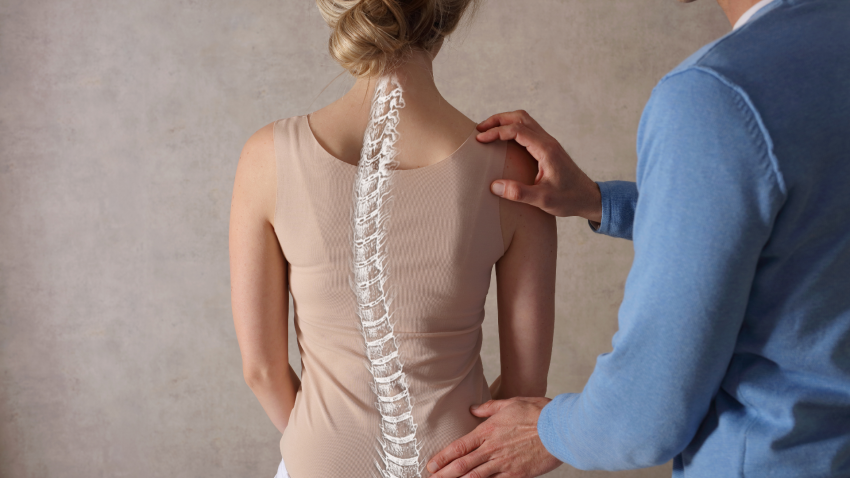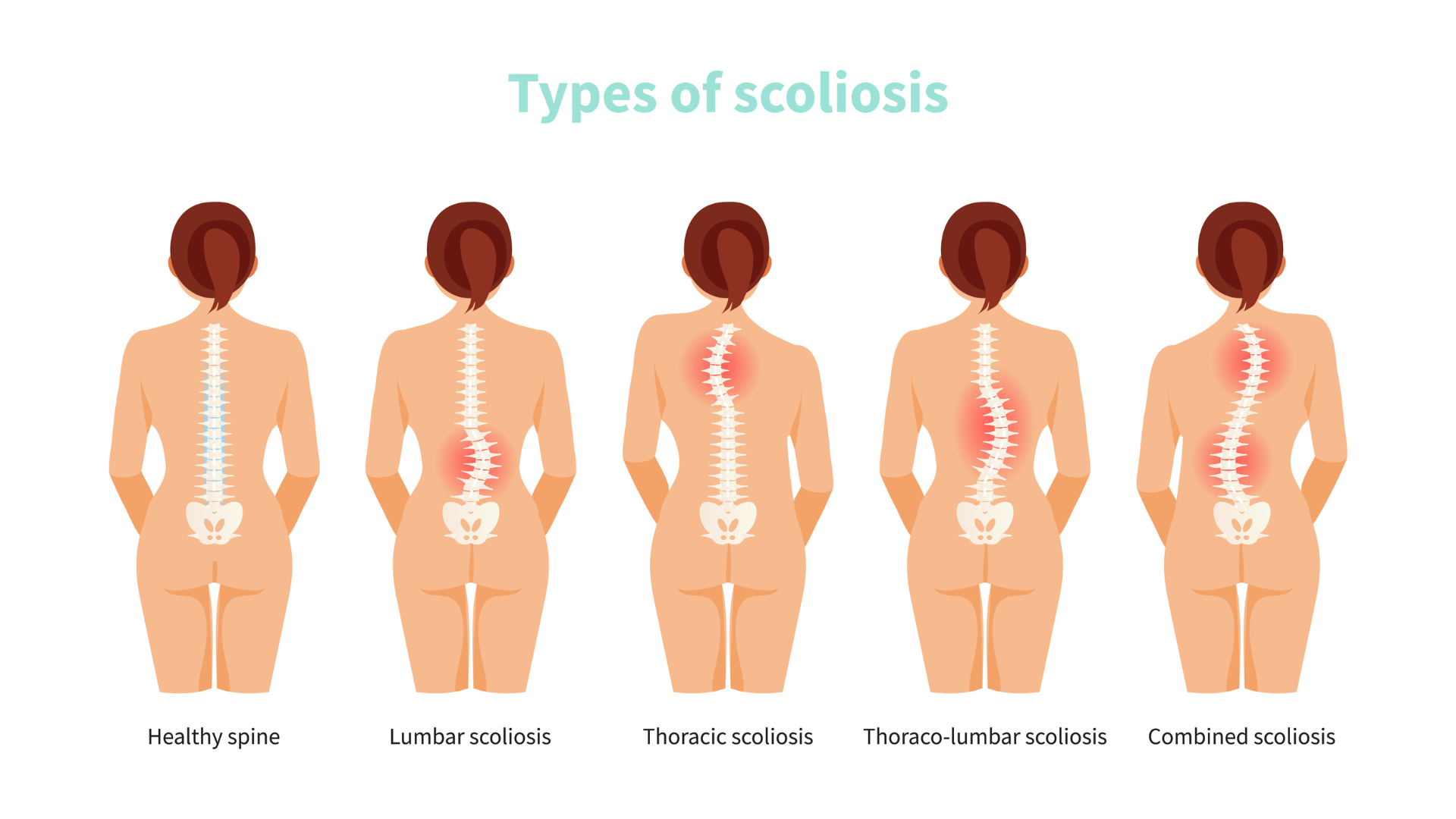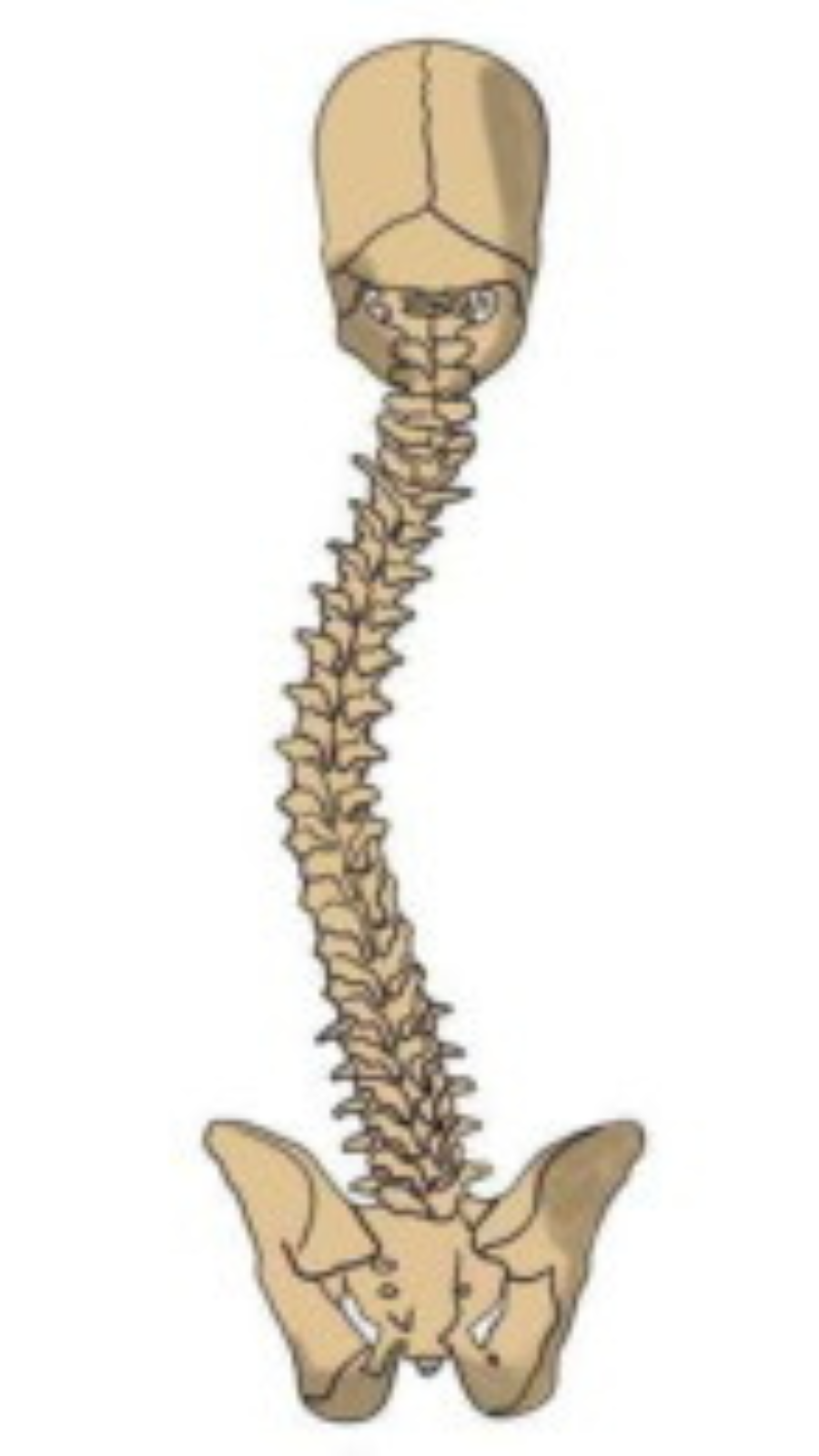View basket (0 items $0.00)

Scoliosis: The How and Why of Involuntary Muscle Contraction
As I mentioned in my previous post, our bones don’t move unless our muscles make them move. And our muscles are controlled by our nervous system. So if any of the bones in our body are moving out of alignment, it’s because our nervous system sends the message to our muscles to move our bones that way.
Why would our nervous system send the message to do something that could cause harm to our bodies? And why do some people develop scoliosis while others don’t?
Watch this video to learn how chronic muscle contraction pulls the spine into a curve.
How Muscles Develop Memory
The movement and level of contraction of our muscles is controlled by our nervous system. The way that our muscles move and how much we keep them contracted is actually learned over time by our nervous system.
Our nervous system learns certain ways of using our muscles based on how we choose to stand and move each and every day. Our nervous system notices the postures and movements that we tend to repeat, and it gradually makes these postures and movements automatic so that we don’t have to think about them consciously.
This learning process—that of developing what we refer to as muscle memory—allows us to go through the activities in our daily lives easily and efficiently. Unfortunately, if we tend to repeat unnatural postures or movements, our nervous system will learn those too. Our automatic neuromuscular learning process doesn’t discern what is good or bad for us—it just notices what we tend to repeat and makes it automatic.

So if you carry your bag on the same side every day, hold your child on the same hip, sit at your desk in the same way, or adapt your posture to an injury—the muscles that flex your spine to the side can easily become chronically tight, leading to idiopathic scoliosis.
What Is the Gamma Loop?
As your nervous system gradually learns to keep your muscles tight, gamma loop activity adapts. This feedback loop in your nervous system regulates the level of tension in your muscles. As your brain keeps sending the message to contract your muscles, gamma loop activity adapts and starts keeping your muscles tight all the time. Meanwhile, your proprioception (your internal sense of your posture and movement) adapts so that you’re unaware of the increased tension in your muscles or your altered posture.
Many people develop involuntary muscle contraction that pulls their spine out of alignment in some way; both postural kyphosis (rounded back) and hyperlordosis (arched lower back) are very common. Lateral flexion is also very common, but many people’s lateral curvature remains less than 11 degrees throughout their life, so they don’t get diagnosed with scoliosis.
How Pandiculation Can Relieve Idiopathic Scoliosis
 So, can you release involuntary muscle contraction, restore normal gamma loop activity, and retrain your proprioception? Yes, you can! The movement technique of pandiculation allows you to do all of these things by sending accurate feedback to your nervous system about the level of tension in your muscles.
So, can you release involuntary muscle contraction, restore normal gamma loop activity, and retrain your proprioception? Yes, you can! The movement technique of pandiculation allows you to do all of these things by sending accurate feedback to your nervous system about the level of tension in your muscles.
Pandiculation releases subconsciously held muscular contraction and brings muscles back into voluntary control. Thomas Hanna incorporated the technique of pandiculation into his system of neuromuscular education called Clinical Somatic Education.
Scoliosis caused by tight muscles pulling the spine out of alignment is a functional issue. It is caused by the way the nervous system is functioning. Attempting to improve a functional spinal curve by using manual force, like a brace or hardware, is nonsensical and most often ineffective, as it does not change the messages that your nervous system is sending to your muscles to stay tight.
Likewise, manual therapy like chiropractic and massage does not change the messages your brain sends to your muscles. Changing these messages requires retraining your nervous system using active, conscious movement: pandiculation.
Clinical Somatics and Scoliosis
 Idiopathic scoliosis patients who use Clinical Somatics exercises to release the chronic muscular contraction that is causing their curvature typically experience reduction or elimination of their pain as well as gradual straightening of their spine. Clinical Somatics exercises are very slow, gentle, therapeutic, and appropriate for all ages and fitness levels.
Idiopathic scoliosis patients who use Clinical Somatics exercises to release the chronic muscular contraction that is causing their curvature typically experience reduction or elimination of their pain as well as gradual straightening of their spine. Clinical Somatics exercises are very slow, gentle, therapeutic, and appropriate for all ages and fitness levels.
For most people, idiopathic scoliosis does not have to be a life sentence. The earlier the condition can be addressed with neuromuscular education, the better. Early, constructive intervention can prevent years of pain and psychological suffering.
How to Make the Most of Clinical Somatics
Become very familiar with your pattern of curvature so that you know how to go about releasing the muscles that are causing it. Here is a simple example: If your curvature looks like this from behind (see image below), it means that the muscles on the right side of your torso are tight, creating the curve that is concave to the right.

Try to make your spine curve like the one in the picture, and you’ll feel the muscles on the right side of your waist contract.
As you learn the exercises, you should spend more time working with the muscles that are tighter. You can do more repetitions with your tighter side; sometimes, you should try lying down and practicing the exercises only with your tighter side. When you stand up, you’ll feel unbalanced, but that’s part of the learning and adjustment process that your nervous system needs to go through. Be sure to do the Standing Awareness exercise before and after. This is a critical part of the process of adjusting your proprioception (your internal sense of your posture).
As you begin to release your tight muscles and adjust your posture, you’ll become aware of the different patterns of tension you have on each side of your body, and you’ll figure out how to work with each side to release that tension.
When you do practice the exercises on both sides, notice how each side of your body feels different. Are you using your muscles differently on each side? Can you sense your muscles more on one side than the other? Do you feel like you have more control on one side than the other? Is one side tighter or looser than the other?
You can then go back and forth from side to side, learning from your more coordinated side. If a movement feels easy or “right” on one side, try to replicate that feeling and way of moving on your other side.
Above all, be patient with yourself. Releasing the complex patterns of muscular tension that cause idiopathic scoliosis is like peeling an onion. You’ll discover many layers—many patterns of tension—along the way. It takes time for the nervous system and the body's tissues to adjust to new ways of standing and moving, so don’t try to rush the process. The most important thing is that you’re heading in the right direction.
Reprinted with permission from Somatic Movement Center.
 Sarah Warren St. Pierre is a Certified Clinical Somatic Educator and the author of the book The Pain Relief Secret. She was trained and certified at Somatic Systems Institute in Northampton, MA. Sarah has helped people with chronic muscle and joint pain, sciatica, scoliosis, and other musculoskeletal conditions become pain-free by practicing Thomas Hanna’s groundbreaking method of Clinical Somatic Education. Sarah is passionate about empowering people to relieve their pain, improve their posture and movement, and prevent recurring injuries and physical degeneration.
Sarah Warren St. Pierre is a Certified Clinical Somatic Educator and the author of the book The Pain Relief Secret. She was trained and certified at Somatic Systems Institute in Northampton, MA. Sarah has helped people with chronic muscle and joint pain, sciatica, scoliosis, and other musculoskeletal conditions become pain-free by practicing Thomas Hanna’s groundbreaking method of Clinical Somatic Education. Sarah is passionate about empowering people to relieve their pain, improve their posture and movement, and prevent recurring injuries and physical degeneration.
Featured Courses








